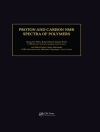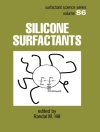Introduction to Adhesive Bonding
A step-by-step introduction to basic principles and practical applications of adhesive bonding, designed for students and professionals alike
Adhesive bonding—the process of joining two surfaces using glues, epoxies, plastic agents, and other adhesives—is a major technique with wide applications in industries as a diverse as aerospace, footwear manufacturing, and food packaging. Adhesive bonding holds several advantages over conventional joining techniques, such as uniform stress concentrations, protection of the bonded surfaces or joints, and the ability to join a variety of different materials and irregular surfaces.
Introduction to Adhesive Bonding provides an accessible overview of the principles and common applications of adhesive bonding. Using a systematic approach, the authors thoroughly explain each step necessary to achieve a successful adhesive bond, including surface preparation, bonding agent selection, design and construction of bonded joints, health and safety considerations, and quality control. Readers are provided with both the theoretical foundation and practical information required to plan and complete their own adhesive bonding projects. This comprehensive yet reader-friendly volume:
- Highlights the inherent advantages of adhesive bonding in various applications
- Describes the use of adhesive bonding in the development of novel and advanced projects in different industries
- Features numerous real-world examples of adhesive bonding in areas such as the transportation industry, civil engineering, medical applications, and sports equipment
- Discusses how adhesives enable development of new products and constructions of reduced weight and size
- Identifies important limitations and durability concerns of the use of adhesives in specific applications
Introduction to Adhesive Bonding is an ideal textbook for undergraduate or graduate Engineering and Chemistry programs, and a useful reference for researchers and industry professionals working in fields such as Engineering, Surface and Polymer Chemistry, and Materials Science.
Cuprins
Preface xi
1 Benefits, Limitations, and Applications of Adhesive Bonding 1
1.1 Definition of Basic Concepts 2
1.2 Historical Context on Adhesive Bonding 3
1.3 Benefits and Limitations of Adhesive Bonding 4
1.4 Examples of Current Applications of Adhesive Bonding 8
1.4.1 Transportation 8
1.4.1.1 Aeronautical Industry 8
1.4.1.2 Road Transport and Rail Industry 11
1.4.1.3 Naval Industry 13
1.4.2 Civil Engineering 15
1.4.2.1 Tiling 15
1.4.2.2 Floor and Wall Covering 15
1.4.2.3 Anchoring Systems 15
1.4.2.4 Building Facades 16
1.4.2.5 Wooden Construction 17
1.4.3 Labelling and Packaging Industry 18
1.4.3.1 Labelling of Consumable Products 18
1.4.3.2 Packaging 18
1.4.4 Medical Applications and Devices 19
1.4.5 Electronic Devices 23
1.4.6 Sport Equipment 23
1.4.7 Footwear 24
2 Principles of Adhesion 27
2.1 Forces Associated with Adhesion 28
2.2 Surface Roughness 31
2.3 Wettability 32
2.4 Adhesion and Cohesion Work 35
2.5 Spreading 36
2.6 Adhesion Theories 37
2.6.1 Adsorption Theory 37
2.6.2 Mechanical Theory 38
2.6.3 Diffusion Theory 41
2.6.4 Electrostatic Theory 41
2.7 Defects and Weak Spots in Adhesive Joints 42
3 Surface Preparation 45
3.1 Objectives of Surface Preparation 45
3.2 Classes of Substrate Materials 47
3.2.1 Metals 47
3.2.2 Polymers 47
3.2.3 Composites 48
3.2.4 Other Materials 49
3.3 Surface Preparation Processes 49
3.3.1 Passive Processes 51
3.3.1.1 Passive Chemical Processes 51
3.3.1.2 Passive Mechanical Processes 55
3.3.2 Active Processes 59
3.3.2.1 Active Chemical Processes 59
3.3.2.2 Physical–Chemical Processes 62
3.3.3 Primers and Adhesion Promoters 65
3.4 Conservation of the Post-treatment Surface 67
4 Main Families of Adhesives and Adhesive Selection 69
4.1 Typical Composition of a Modern Adhesive 69
4.2 Methods for Adhesive Classification 70
4.2.1 Molecular Structure 70
4.2.1.1 Thermosets 71
4.2.1.2 Thermoplastics 71
4.2.1.3 Elastomers 72
4.2.1.4 Hybrid Materials 72
4.2.2 Physical Form 74
4.2.3 Mechanical Properties 74
4.2.4 Hardening and Implementation Method 75
4.2.4.1 Hardening by Chemical Reaction 75
4.2.4.2 Hardening via Physical Processes 76
4.2.4.3 Pressure-Sensitive Adhesives 76
4.2.5 Chemical Composition 77
4.3 Main Structural Adhesives 77
4.3.1 Epoxy Adhesives 77
4.3.2 Polyurethane Adhesives 78
4.3.3 Acrylic Adhesives 79
4.3.4 Phenolic Adhesives 80
4.3.5 Aromatic Adhesives 81
4.4 Main Non-structural Adhesives 81
4.4.1 Elastomeric Adhesives 81
4.4.2 Polyester Adhesives 82
4.4.3 Hot Melt Adhesives 82
4.4.4 Inorganic Adhesives 83
4.5 How to Select an Adhesive 83
4.5.1 Case Study: Adhesive Selection for the Automotive Industry 84
4.6 How to Test and Characterise an Adhesive 88
4.6.1 Mechanical Testing 88
4.6.1.1 Strength Tests 89
4.6.1.2 Fracture Tests 93
4.6.1.3 Testing Under Severe Environmental and Loading Conditions 98
4.7 Mechanical Properties of Adhesives 102
5 Manufacture 107
5.1 Adhesive Storage 107
5.1.1 Storage Time 108
5.1.2 Humidity 109
5.1.3 Temperature 109
5.1.4 Light and UV Radiation 110
5.2 Adhesive Metering and Mixing 110
5.2.1 Adhesive Metering 111
5.2.2 Adhesive Mixing 111
5.3 Adhesive Forms and Application 114
5.3.1 Liquid Adhesives 114
5.3.2 Paste Adhesives 115
5.3.3 Film Adhesives 116
5.3.4 Tapes 117
5.4 Joint Assembly and Fixturing 117
5.4.1 Moulds and Fixtures 117
5.4.2 Adhesive Thickness Control 119
5.4.3 Joint Assembly 119
5.5 Adhesive Hardening 120
5.5.1 Heat Curing Processes 121
5.5.2 Evaporation-Based Processes 125
5.6 Finishing Steps 126
6 Quality Control 127
6.1 Quality Control of the Incoming Materials 128
6.1.1 Control of Adhesive Quality 128
6.1.1.1 Mechanical Properties 128
6.1.1.2 Viscosity 128
6.1.2 Control of Adherend Quality 129
6.1.2.1 Mechanical Properties 129
6.1.2.2 Wettability, Contact Angle, and Surface Energy 129
6.1.2.3 Surface Roughness 131
6.2 Quality Control of the Manufacturing Process 133
6.3 Quality Control on Bonded Structures 137
6.3.1 Types of Defects Present in Bonded Joints 137
6.3.2 Destructive Tests 138
6.3.2.1 Proof Tests 139
6.3.2.2 Fractography Analysis 139
6.3.3 Non-destructive Tests 141
6.3.3.1 Visual Inspection 141
6.3.3.2 Tap Test 142
6.3.3.3 Ultrasonic Test 143
6.3.3.4 Acoustic Emission Test 143
6.3.3.5 Radiography Test 144
6.3.3.6 Eddy Current Test 145
6.3.3.7 Thermal Infrared Method 146
6.3.3.8 Lamb Wave-Based Testing 146
6.3.3.9 Electromechanical Impedance Spectroscopy 146
6.3.3.10 Laser-Based Testing 149
7 Environment, Health, and Safety 151
7.1 Toxicity of Adhesives: Are Adhesives Really Toxic? 153
7.2 General Precautions for Handling Adhesives 153
7.2.1 Pictograms 154
7.2.2 Training for Handling Adhesives 157
7.2.3 Safety Eyewear 158
7.2.4 Hand Protection – Gloves 158
7.2.5 Safety Shoes 159
7.2.6 Lab Coat 159
7.2.7 Ventilation Systems 159
7.3 Hazardous Characteristics of the Most Common Adhesives 160
7.3.1 Structural Adhesives 160
7.3.1.1 Epoxies 160
7.3.1.2 Polyurethanes 161
7.3.1.3 Acrylic Adhesives 161
7.3.1.4 Phenolic Adhesives 161
7.3.1.5 Aromatic Adhesives 161
7.3.2 Non-structural Adhesives 162
7.3.2.1 Synthetic Rubbers 162
7.3.2.2 Polyesters 162
7.3.2.3 Hot Melt Adhesives 162
7.3.2.4 Inorganic Adhesives 162
7.4 Surface Preparation Precautions 162
7.5 Adhesive Application Precautions 164
7.6 Environmental Protection 164
7.6.1 Air 165
7.6.2 Water 165
7.6.3 Soil 166
8 Design of Bonded Joints 167
8.1 Main Loading Modes on Adhesive Joints 168
8.2 Main Adhesive Joint Geometries 169
8.3 Joint Strength Prediction Using Analytical Methods 171
8.3.1 Determination of Stresses Acting on an Adhesive Joint 172
8.3.2 Failure Criteria for Bonded Joints 175
8.3.2.1 Failure in the Adhesive 176
8.3.2.2 Failure in the Adherends 177
8.4 Joint Strength Prediction Using Numerical Methods 180
8.5 Parameters That Affect Joint Performance 183
8.5.1 Effect of Adhesive Thickness 183
8.5.2 Effect of Overlap Length 184
8.5.2.1 Overlap Length and Adhesive Behaviour 185
8.5.2.2 Overlap Length and Adherend Strength 186
8.5.2.3 Overlap Length and Composite Adherends 187
8.5.3 Effect of Temperature and Thermal Stresses 187
8.6 Methods to Improve Joint Strength 189
8.6.1 Adhesive Fillet 189
8.6.2 Mixed Adhesive Joints 190
8.6.3 Functionally Graded Joints 190
8.6.4 Hybrid Joints 191
8.7 Case Studies 192
8.7.1 Case Study 1 – Effect of Adhesive Type on the Strength of Adhesive Joints 192
8.7.2 Case Study 2 – Effect of Overlap Length and Adherend Type on the Strength of Adhesive Joints 194
8.7.3 Case Study 3 – Effect of Adhesive Thickness on the Strength of Adhesive Joints 197
8.7.4 Case Study 4 – Strength Prediction of Adhesive Joints with Composite Adherends 201
8.7.5 Case Study 5 – Strength Prediction of an SLJ with Cohesive Zone Modelling 205
8.7.6 Case Study 6 – Effect of Thermal Stresses on Adhesive Joints 208
9 Durability of Adhesively Bonded Joints 213
9.1 Environmental Effects 214
9.1.1 Hygrothermal Ageing 214
9.1.2 Temperature 220
9.2 Loading Conditions 221
9.2.1 Fatigue 221
9.2.1.1 Total Fatigue Life (S–N) Approach 223
9.2.1.2 Fatigue Crack Growth Approach 225
9.2.2 Creep 229
10 Case Studies 235
10.1 Vehicle Construction 235
10.2 Seat Fixation in Passenger Trains 237
10.3 Aeronautical Applications 239
10.4 Flexible Cooling Circuits 241
10.5 Glass to Metal Bonding in Appliances 243
10.6 Roof Coverings 245
10.7 Shoe Manufacture 246
10.8 Food Packaging 248
Recommended Bibliography 251
Referenced Bibliography 251
Index 253
Despre autor
Eduardo A. S. Marques, Post-doctoral researcher, Institute of Science and Innovation in Mechanical and Industrial Engineering (INEGI), University of Porto, Portugal.
Ana S. Q. F. Barbosa, Post-doctoral researcher, Institute of Science and Innovation in Mechanical and Industrial Engineering (INEGI), University of Porto, Portugal.
Ricardo J. C. Carbas, Post-doctoral researcher, Institute of Science and Innovation in Mechanical and Industrial Engineering (INEGI), University of Porto, Portugal.
Alireza Akhavan-Safar, Post-doctoral researcher, Institute of Science and Innovation in Mechanical and Industrial Engineering (INEGI), University of Porto, Portugal.
Lucas F. M. da Silva, Full Professor and Director of the Integrated Master in Mechanical Engineering Program, Department of Mechanical Engineering, University of Porto, Portugal.












